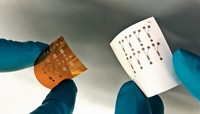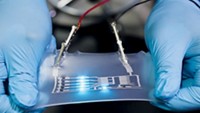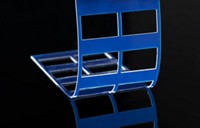Advertisement
Grab your lab coat. Let's get started
Welcome!
Welcome!
Create an account below to get 6 C&EN articles per month, receive newsletters and more - all free.
It seems this is your first time logging in online. Please enter the following information to continue.
As an ACS member you automatically get access to this site. All we need is few more details to create your reading experience.
Not you? Sign in with a different account.
Not you? Sign in with a different account.
ERROR 1
ERROR 1
ERROR 2
ERROR 2
ERROR 2
ERROR 2
ERROR 2
Password and Confirm password must match.
If you have an ACS member number, please enter it here so we can link this account to your membership. (optional)
ERROR 2
ACS values your privacy. By submitting your information, you are gaining access to C&EN and subscribing to our weekly newsletter. We use the information you provide to make your reading experience better, and we will never sell your data to third party members.
Materials
Japanese art of paper cutting inspires strong, removable adhesive
Carefully designed cuts in tape make it stick 10 times as strongly yet peel off easily when needed
by Prachi Patel, special to C&EN
February 26, 2018
| A version of this story appeared in
Volume 96, Issue 9

Borrowing from the Japanese paper-cutting art of kirigami, researchers have made specially cut tape that is 10 times as sticky as uncut tape but is also easy to pull free and reuse (ACS Appl. Mater. Interfaces 2018, DOI: 10.1021/acsami.7b18594). Michael D. Bartlett and colleagues at Iowa State University found that cleverly designed cuts in a clingy film make it stick strongly but release easily when it’s pulled in a specific direction. The researchers start with tape made of 0.75-mm-thick polyethylene sandwiched between flexible polydimethylsiloxane sheets. Then they laser-cut a simple pattern of rectangles along the length of the tape. By experimenting with the spacing and dimensions of the cuts, the researchers fine-tuned the tape’s reversible stickiness. When mounted on a volunteer’s arm, the tape takes 10 times as much force to detach as a plain, uncut tape when tugged along its length. But when peeled across its width, it lifts off easily. The reversible adhesive could be used to make wall-climbing robots; wearable, tattoolike sensors; and easy-to-remove bandages, the researchers say.





Join the conversation
Contact the reporter
Submit a Letter to the Editor for publication
Engage with us on Twitter